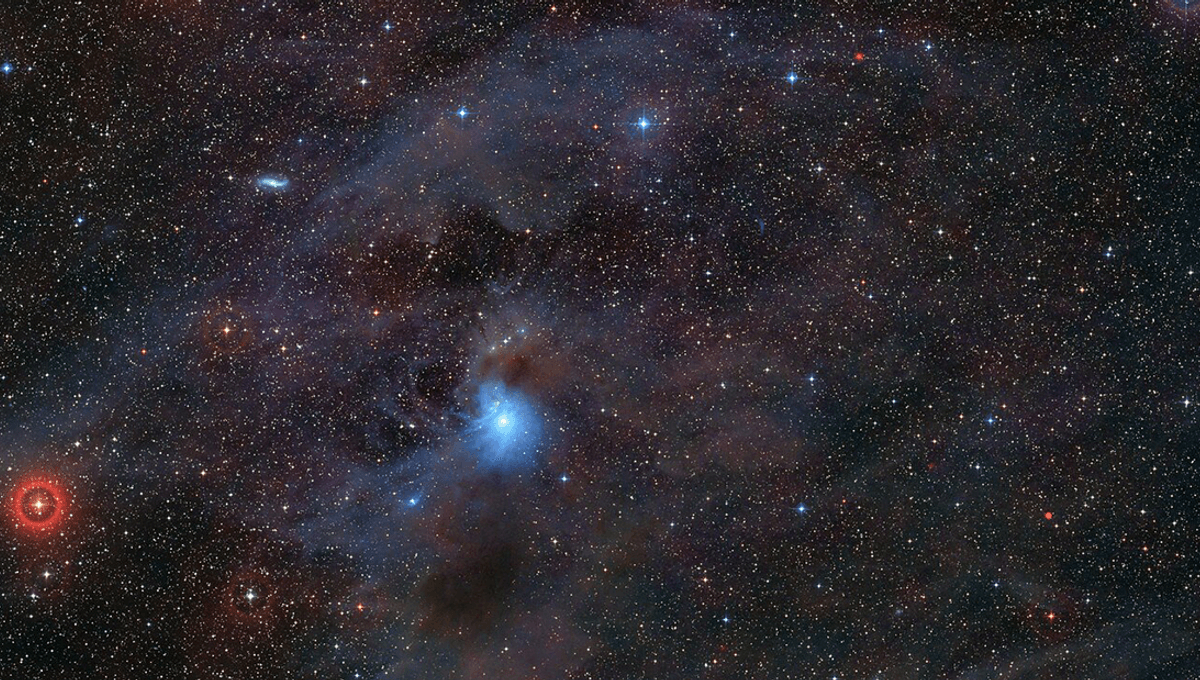
An international team of astronomers using the European Southern Observatory’s Very Large Telescope (ESO’s VLT) have spotted a rogue planet breaking a new record; growing at a rate of 6 billion tonnes per second.
Rogue planets – sometimes called free-floating planets – are interstellar, planetary-mass objects that are not gravitationally bound to a star or a brown dwarf, but float through space alone. They have only been discovered pretty recently, with the first found in 2000, but some statistical estimates have suggested there could be trillions of them in the Milky Way, with 20 times more rogue planets than stars.
Free-floating planets, like their stellar-bound buddies, come in different sizes, with rocky rogue planets thought to be the most abundant. Cha 1107−7626 is in an interesting range, being around five to 10 times the mass of Jupiter. That falls short of being massive enough to fuse deuterium in its core, which would make it a brown dwarf, a sub-stellar object with a mass between 13 and 80 times that of Jupiter.
But Cha 1107−7626 isn’t done eating. Monitoring the object using the VLT and JWST, a team led by the University of St Andrews found it suddenly flared up in April-May and June-August 2025, brightening by around 1.5-2 magnitudes. The team reports a “6–8-fold increase in the mass accretion rate, reaching 10−7 MJupiteryr−1, the highest measured in a planetary-mass object”.
We still have many questions about these objects, and these observations could provide clues as to how they end up floating through space by themselves.
“The origin of rogue planets remains an open question,” Professor Aleks Scholz from the School of Physics and Astronomy at St Andrews, and co-author of the study, said in a statement. “Are they the lowest-mass objects formed like stars, or giant planets ejected from their birth systems?”
The bursts seen in this rogue planet were of a shorter variety, known as EXors after EX~Lupi, a young star that puts on these repeated outbursts.
“Low-mass stars build a significant fraction of their total mass during short outbursts of enhanced accretion known as FUor and EXor outbursts,” a paper on the topic explains. “FUor objects are characterized by a sudden brightening of ~5 magnitudes at visible wavelengths within one year and remain bright for decades. EXor objects have lower amplitude outbursts on shorter timescales.”
By the end of the team’s observations, the burst was still ongoing. Meanwhile, searching through observations from the VLT, they found that there were also high accretion levels, suggesting that the planet is undergoing frequent bursts.
“The observed event is inconsistent with typical variability in accreting young stars and instead matches the duration, amplitude and line spectrum of an EXor-type burst, making Cha 1107-7626 the first substellar object with evidence of a potentially recurring EXor burst,” the team writes in their paper, though adding that “Cha 1107-7626 clearly shows unusually strong accretion variability” compared to the case of young stars.
“This discovery blurs the line between stars and planets and gives us a sneak peek into the earliest formation periods of rogue planets,” Dr Belinda Damian, co-author and an astronomer at the University of St Andrews, added.
The study is published in The Astrophysical Journal Letters.
Source Link: Record-Breaking Rogue Planet Seen Growing At A Rate Of 6 Billion Tonnes Per Second